The rugged mountains and coastline of North Wales attract many…
English Sundials
There are accessories that are essential for the English country estate and garden. If we visit the garden or park of a grand house in the English countryside, we surely will bump into urns, birdbath, fountains, statues, pavilions, mazes and sundials. For me a garden without a sundial an English garden cannot be called English. This implies I love sundials. Yes, I do. I love their base, ornamentation, the romantic ambience they give to the garden. No wonder my photo collection of sundials grew bigger and bigger.
It is generally known that clocks show the meantime whilst sundials show the local time. More than that I would not like to spend on how sundials work or their astronomical background, I far sooner explain more about their history and types. However, it is worth having a look at their structure.
Structure
The structure of a sundial is quite simple: it has a gnomon or polar and a dial. While the position of a polar is parallel to the Earth’s rotational axis, the gnomon is a pole or column standing on a horizontal surface. In terms of types there are globe sundials, concave, vertical, horizontal, equinoctial – examples will follow.

Vertical sundials
Over the centuries vertical sundials were used in Great-Britain. The Anglo-Saxons used an octaval or tide system, where the twenty-four-hour day was divided into 8 parts or tides. One part had 3 hours of duration. The word ‘tide’ means time or hour and still can be found in words like ‘morningtide’, ‘noontide’ or ‘eveningtide’. The Christian Church kept the strict system of prayers, therefore, times of the prayers were marked by a cross on the dial. This is called canonical hours and is not to confused with the vertical sundials that can be seen on church towers.
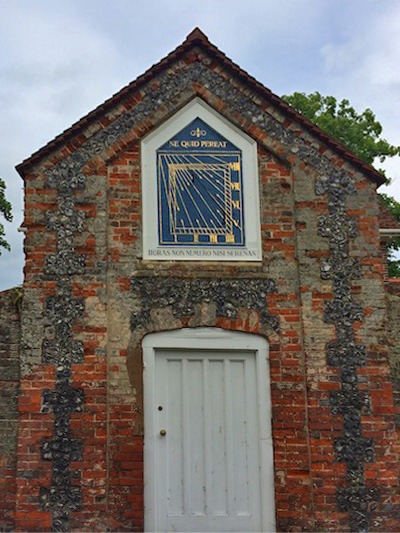
The first Ango-Saxon dial was Bewcastle Cross in Cumbria close to Hadrian’s Wall. This is a stone cross from the 7th century which is decorated with different ornaments. Although only the shaft of the cross survived, there is a sundial on one side of the cross where the gnomon probably was a wooden or metal peg inserted into a hole. The Anglo-Saxon vertical sundials were not accurate because the gnomon was horizontal which would have been fine in areas close to the Equator but not in Great-Britain. Time measurement became more accurate with the so called scientific sundials where the gnomon was parallel to the axis of the earth and the hours had equal length. Interestingly, it is unknown when the equal length of hours were introduces in Britain, therefore it is suggested that it was transmitted by Arabs or Moors during the time of the crusades.
Horizontal sundials
Mechanical clocks that showed 24 equal hours were used in the 13th century but being inaccurate people kept on using and trusting sundials. The use of dividing the day into 24 equal hours become common in the Renaissance, in the 15th century only. In the coming four hundred years sundials flourished. After the Restauration (1660) dials became more detailed and contained more information. More detailed sundials have a so called furniture which shows the location of the sun in the zodiac (date), the altitude of the Sun, the Babylonian hours which is the number of hours gone by since sunrise or the Italian hours (number of hours gone by since sunset). Making sundials, the art of dialling was considered to be a difficult mathematical subject and was as highly regarded as astronomy or navigation in Great Britain. In the 19th century, however, with the increased accuracy of the mechanical timekeepers the usefulness of the sundial has declined.
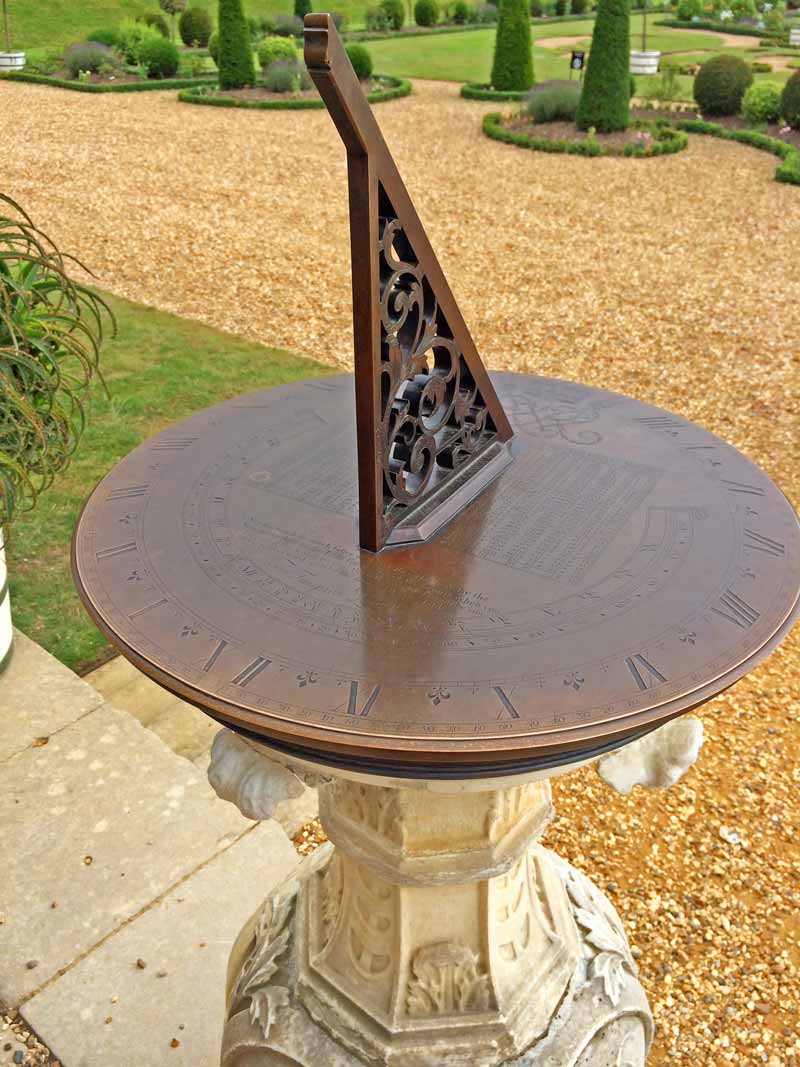

This explains why there are so many sundials on estates in the country. The sundial became fashionable garden ornament and as instruments in the 16th century. As clocks were unreliable even in the 19th century bigger households kept on checking the time using the sundials in the garden and adjust their clocks if necessary. Almost on every estate we find a horizontal sundial, either on a pole or a wall or a fence.
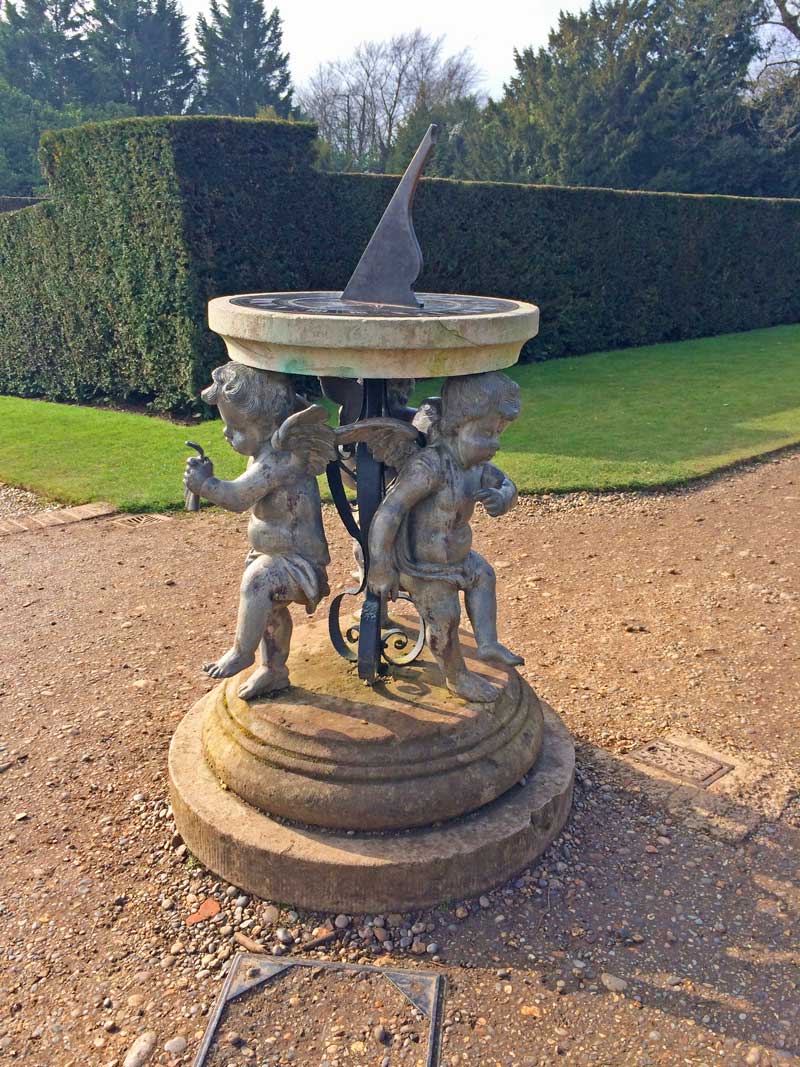
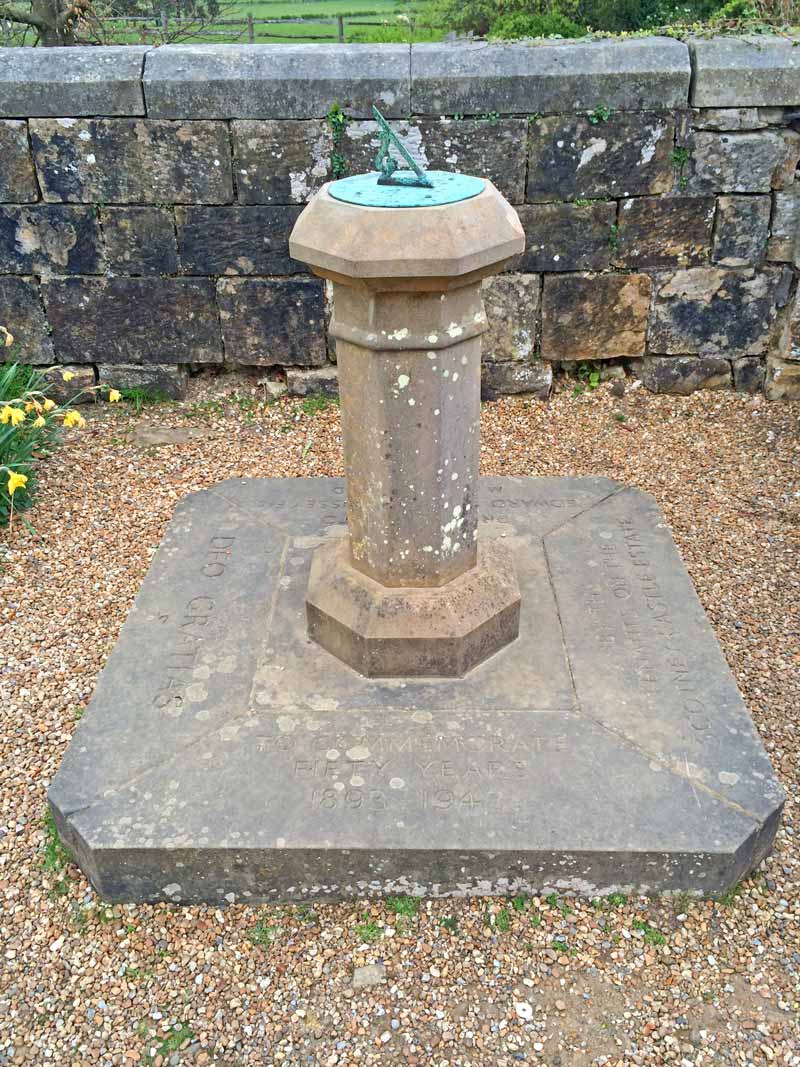
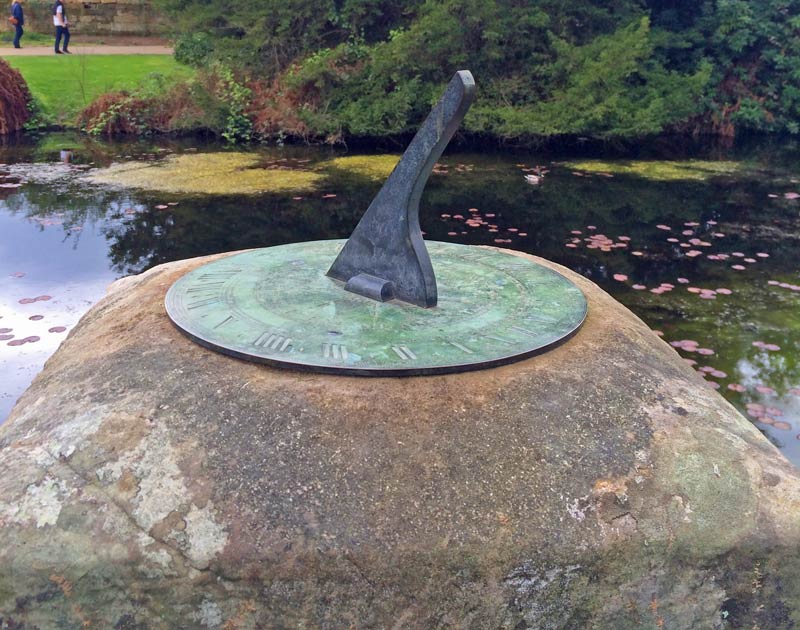
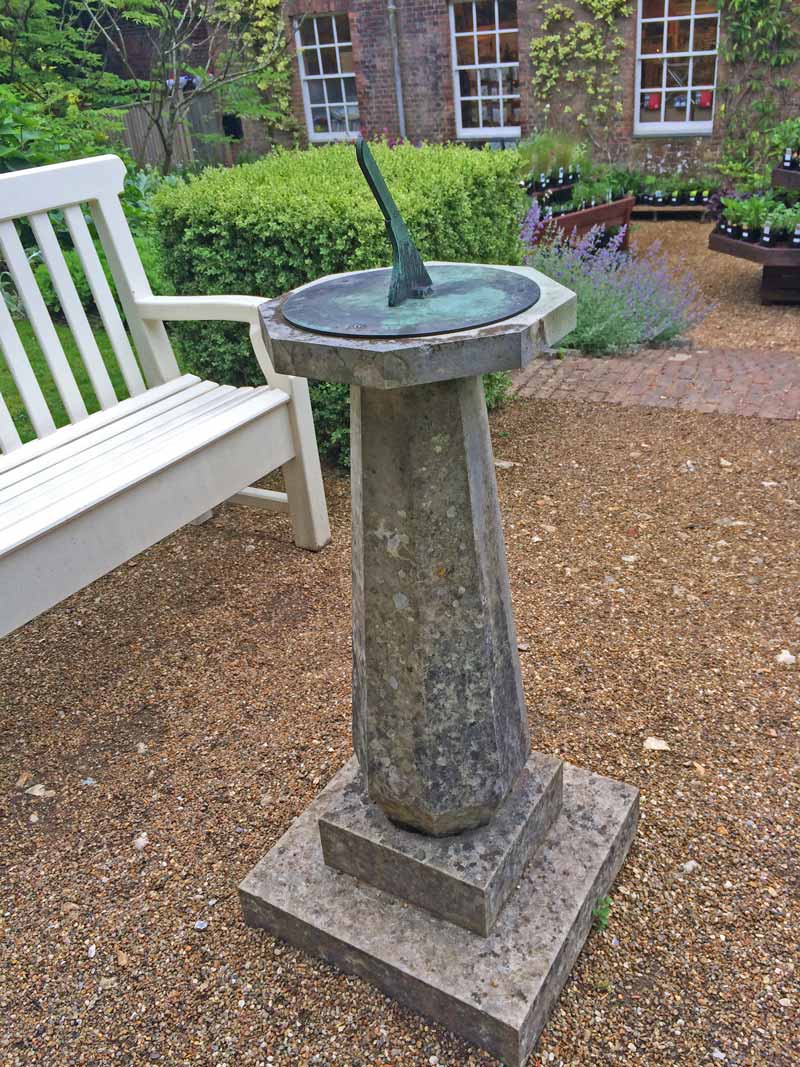

Pillar sundials
I would highlight two types of English sundials that are special. One of them is the pillar sundial. During the Catholic times crosses of stone were erected in the middle of the village so that people traveling can thank God for the safe journey and it also functioned as an assembly point if a village did not have a church. The priest would stand on the stairs and preach. During the reign of Elizabeth I who was protestant, these crosses were destroyed and only the shaft survived. In order not to remind people of the Catholic stone crosses, sundials were fitted on the poles, sometimes with a hood on top for protection.
Multiple sundial
The other type is the multiple sundial which contained several dials and represented not only the mathematical knowledge and skills of the diallist. Multiple sundials reached Great Britain by German and French influence. The famous German astronomer, Nicholaus Kratzer came to England in 1518 and became the royal astronomer to Henry VIII. His first multiple sundial was erected in St Mary’s Church in Oxford around 1523. Interestingly the first multiple sundials were made in England but the biggest number of them is to be found in Scotland where the Scots made lot of special and unique multiple sundials.
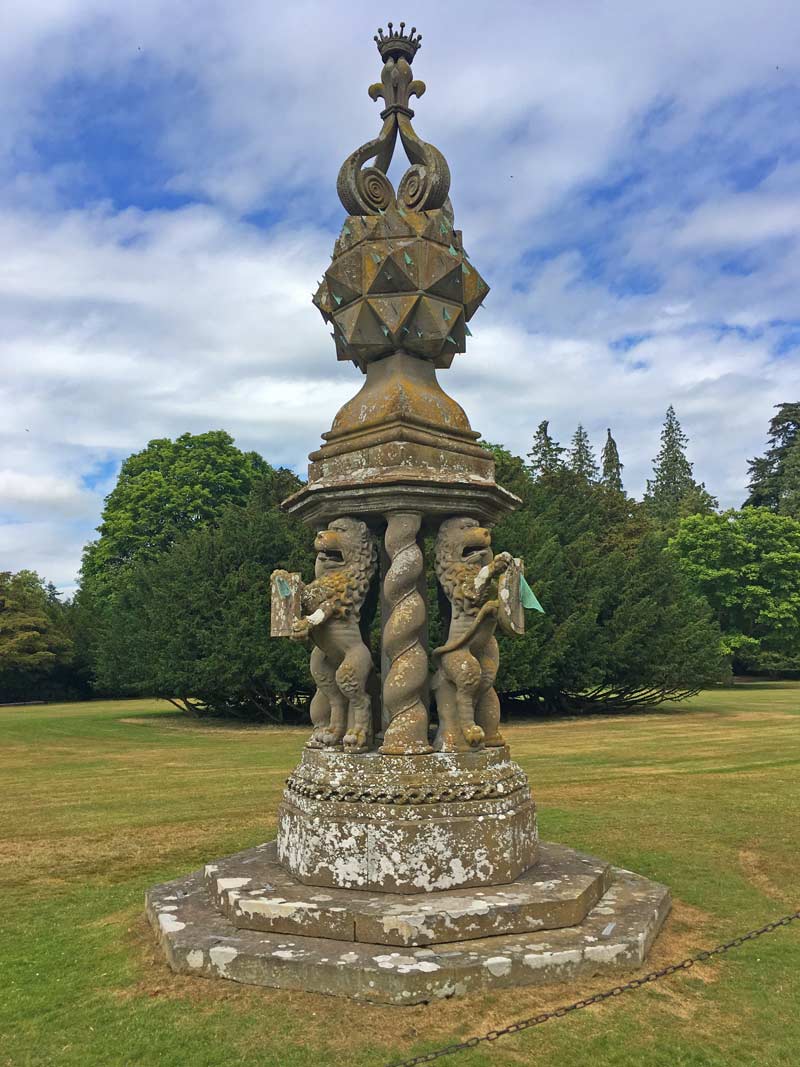
~
I am happy to see that sundials did not extinct: on the cover photo a sundial with a cricket player from today in Hollyport, Berkshire.



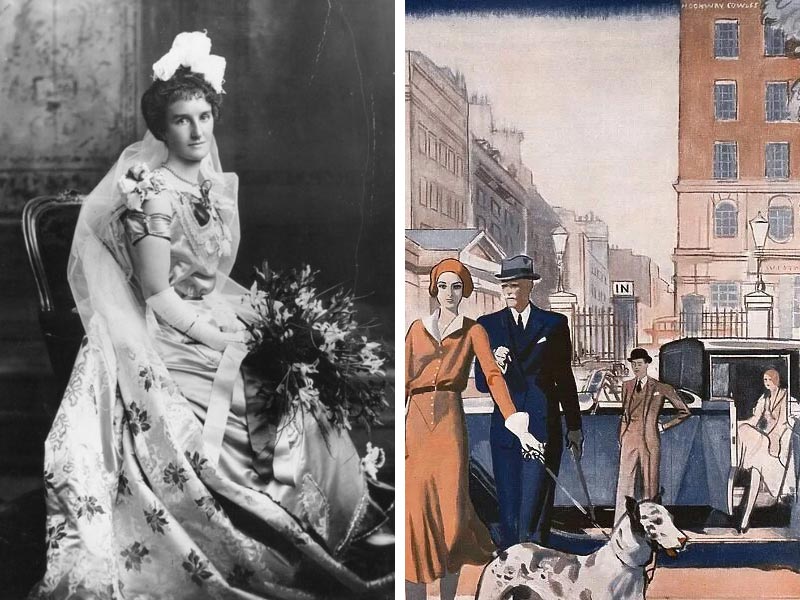
🌞Thank you for your very informative text and photos. I see that some garden sundials, mounted on columns, are rather small. I wonder if my 8 inch square could have been used in that manner. I would also like to know when it became possible for more modest homes to become equipped with sundials and how I might determine the age of my instrument.🌛
Hi Mark, I’m pleased you found the post about sundials useful. Unfortunately, I’m not an expert I just love sundials. I would guess cheap and smaller replicas were already available during the Victorian era as people always tried to copy the wealthy, but I’m only guessing here. As for the age of your sundial, I think it’s best to ask an antique expert.